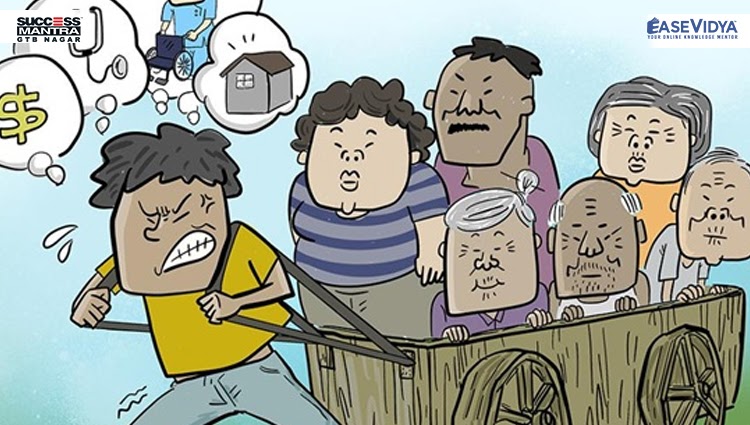
Demographic Dividend and Challenges
January 14, 2022
10 MINUTES
Introduction.
- India has one of the youngest populations in an aging world.
- Since 2018, India’s working-age population has grown larger than the dependent population.
- The hope is that as the young Indian population enters the working age, it will lead to higher economic growth.
Healthcare Provisions
- Healthcare provisions in India are grossly inadequate and access to healthcare is highly inequitable.
- Lack of efficient public healthcare and burden of out-of-pocket health expenditures.
- Ineffective functioning of the public distribution system (PDS)
- growing economic inequalities and lack of nutritional awareness pose challenges in combating malnutrition.
State of Literacy
- Basic literacy in the overall population has progressed modestly.
- The state of functional literacy and professional skills is poor.
- Indian graduates have low employability and do not meet changing economic structure or support global competitiveness.
Rising Inequality
- There is growing inequality across social groups and income groups which translates itself into poor socio-economic mobility.
- Lack of socioeconomic mobility hinders human capital development and traps a large section of population in the vicious circle of poverty.
Inadequate use of knowledge bases from technology developments
- There is a disconnect between India’s rate of technological growth and ability to distribute the gains from it.
- The use of technical advancements has been concentrated in few sectors and benefits accrued by a few elitist sections of the society.
Jobless growth
- India’s high growth rate phase (2004-05 to 2010-11) has created significantly fewer jobs as compared to previous decades of economic growth.
- Around 47 % of India’s population is still dependent on agriculture which is notorious for underemployment and disguised unemployment.
- Majority of the workforce is employed by the unorganized sector where workers are underpaid and lack any kind of social security.
Falling female labour force participation
- Socio-cultural factors and rising family incomes have been the main reasons for the decline in India’s female labour force participation.
- A significant proportion of qualified women drop out of the workforce for reasons ranging from no suitable jobs in the locality—particularly in rural areas—to family responsibilities and marriage.
A differential planning approach is needed
- A multi-pronged approach is imperative to reap the demographic dividend.
- The gaps in the expenditure on social infrastructure like health and education should be closed by strengthening the delivery mechanisms of the government initiatives.
- As recommended by the National Health Policy 2017 and the NEP 2020, India needs to increase its spending on health and education to at least 2.5 % to 6 % of GDP respectively from its current levels.
- India has to invest more in human capital formation at all levels, from primary education to higher education, research and development as well as on vocational training to increase the skill sets of its growing working-age population.
- Bridging the gender gaps in education, skill development, employment and reducing social inequalities prevalent in the society to enhance human capabilities.
- There is also a need to engage with the youth and create an enabling environment for entrepreneurship.
- Social policies for each state must be differentiated to accommodate different rates of population growth.













cwqwkmplxc
Latest News on Education & LAW Exams Blogs | Success Mantra [url=http://www.g86mhw7xoqe2589hp5j83z1576rjl62es.org/]ucwqwkmplxc[/url] <a href="http://www.g86mhw7xoqe2589hp5j83z1576rjl62es.org/">acwqwkmplxc</a> cwqwkmplxc http://www.g86mhw7xoqe2589hp5j83z1576rjl62es.org/